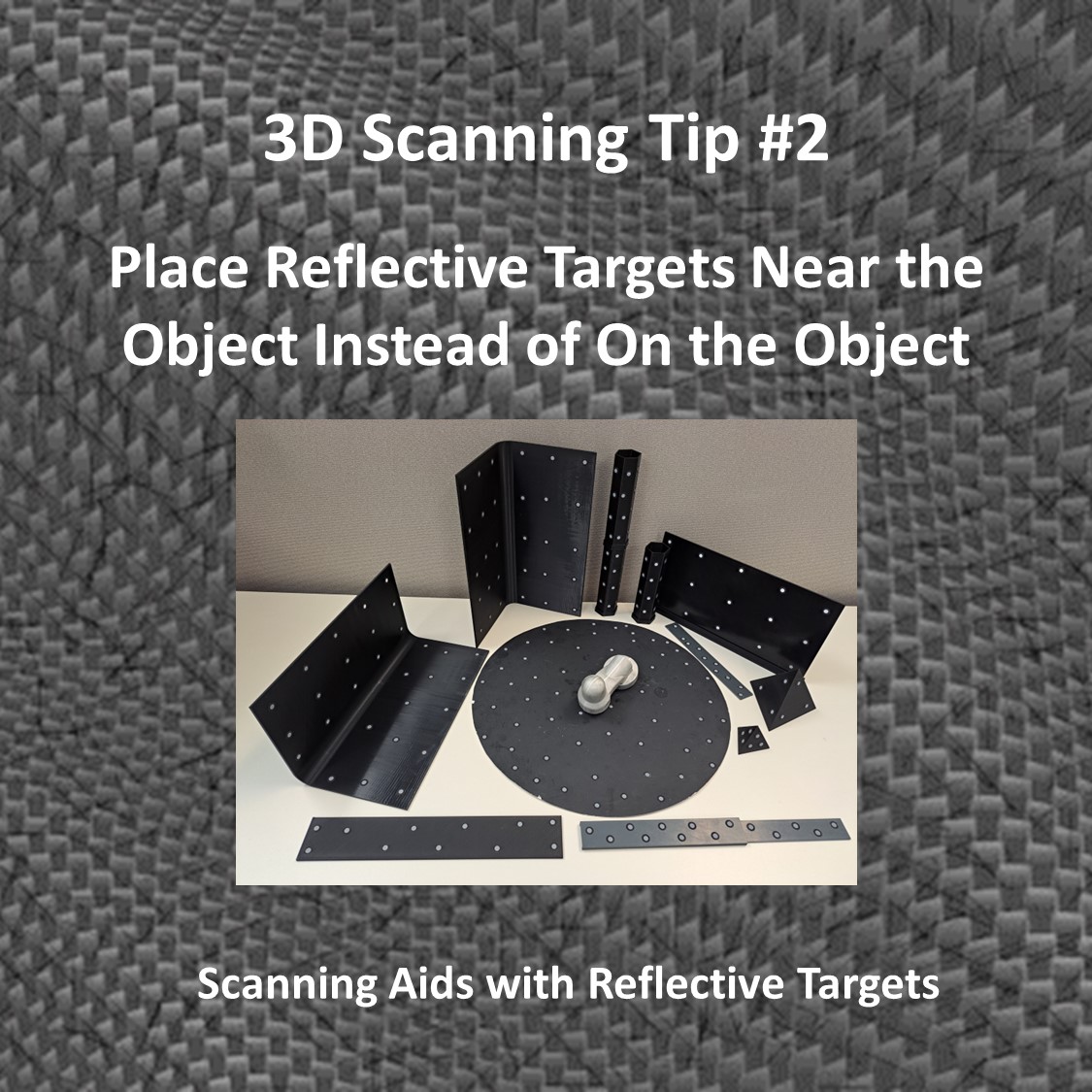
This 3D scanning tip is all about the use of reflective targets to maintain tracking.
You can learn more on this topic by watching this video.
BACKGROUND
Reflective targets are an effective method to improve tracking while 3D scanning. We generally first think of applying reflective targets directly to the object being scanned. While that works well for many objects, that also means you need to remove the reflective targets when 3D scanning is completed. Depending on the size and surface finish of the object, removing these targets can be tedious and time consuming.
Also, for very small objects, especially those with fine features, applying reflective targets to the object may not be practical.
SOLUTION
So, here’s the tip: when possible, place the reflective targets near the object being scanned instead of on the object. The most efficient way to do this is to use “scanning aids”. A scanning aid is simply an object with reflective targets that is placed near the item being scanned. See examples below.
1. Black turntable with reflective targets.
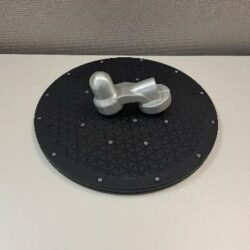
2. Small pyramids with reflective targets. Two sizes are shown. We’ve found the smaller ones to be very effective, and they don’t obstruct the scanner’s line-of-sight compared to the larger ones.
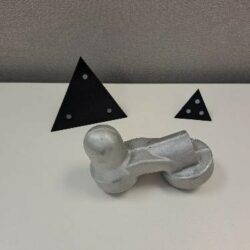
3. Black poster board with reflective targets.
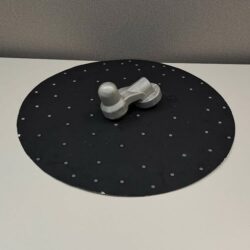
4. Plastic or cardboard strips with reflective targets. The plastic strips shown are two-piece structures with channels that fit together, providing a means for adjusting the overall length.
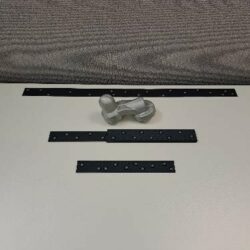
5. Plastic sheet with a stand. These two sheets were designed to allow for two orientations (horizontal or vertical) to accommodate objects of different sizes and shapes. The larger sheet is positioned vertically and the smaller one is positioned horizontally in the same stand. The stand has a small groove that accommodates the thickness of the sheets.
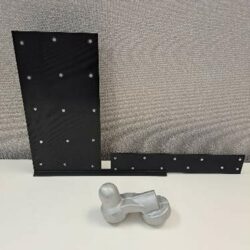
6. Plastic piece with a 90 degree angle. These scanning aids can also be positioned vertically or horizontally to accommodate a variety of shapes and sizes.
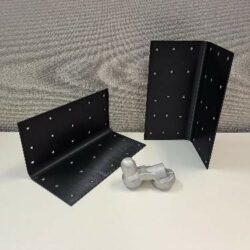
7. Short columns with reflective targets. In this case, the columns have a hexagonal cross-section, which makes more flat surfaces for targets, making it easier to quickly move around the item being scanned. Also, these were designed to be stackable to accommodate taller objects.
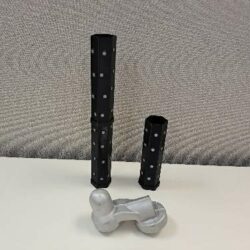
It should be noted that for very large objects, the field of view may not be large enough to reach the middle portions of the object while simultaneously using the targets for tracking.
At Strategic 3D Solutions, we partner with customers to provide solutions every day. Need help with designing, 3D printing, or 3D scanning for your project? Planning to purchase a 3D printer or 3D scanner? Contact us.
To learn more about the author, click here.
